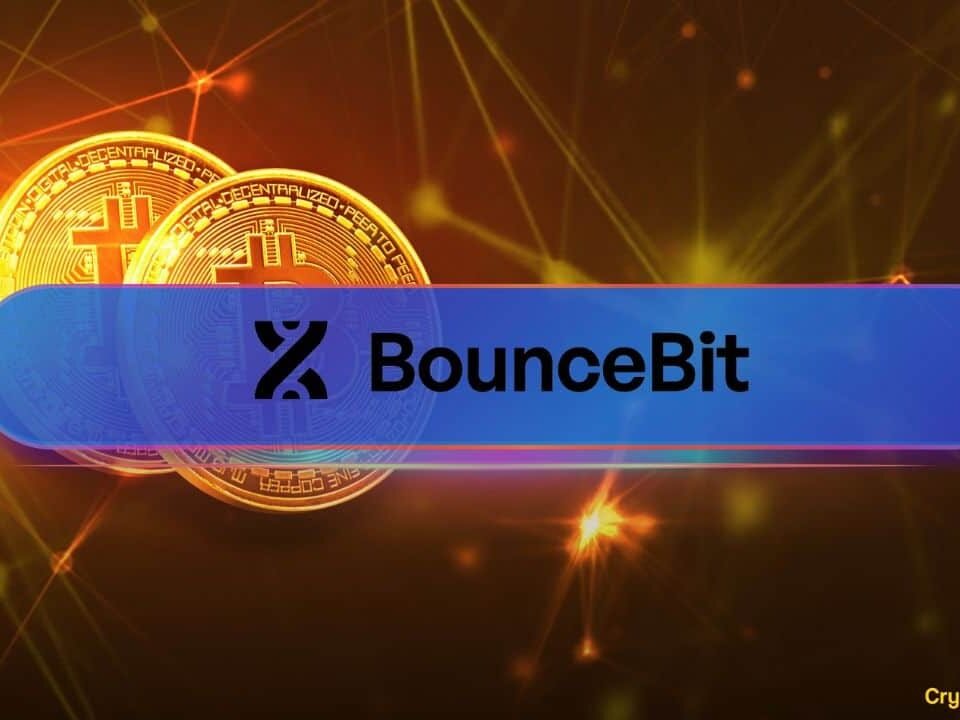
The 10 Best Ones to Watch in 2024
November 12, 2024
How to Spot Online Job Scams as a Virtual Assistant
November 12, 2024
Cryptocurrency staking is a course of the place customers are in a position to quickly lock their tokens in trade for a reward, mostly within the type of curiosity.
Not like blockchains, that are primarily based on the Proof of Work (PoW) consensus algorithm, like Bitcoin, Polkadot makes use of an algorithm known as Nominated Proof of Stake (NPoS).
NPoS comes with many intricacies centered across the interoperability of Polkadot’s parachains, that are basically related and secured by the primary community, also called the Relay Chain. Past its many options, NPoS additionally permits staking.
The next information supplies an in-depth clarification of how Polkadot staking works, the several types of DOT staking, their benefits and downsides, and potential dangers, in addition to a step-by-step information on how one can stake Polkadot instantly.
If you wish to discover extra in-depth data, you may as well take a look at our Polkadot information.
Additionally, in your comfort, we now have devoted a particular video that goes via the intricacies of Polkadot staking. You’ll be able to examine it beneath.
Fast Navigation:
Understanding Polkadot Staking
Whereas easy, Polkadot staking can be a reasonably technical course of, particularly on the subject of native DOT staking. Subsequently, it’s important to be well-informed on the basic rules that will let you navigate staking techniques with none challenges.
Let’s be sure to get the basics down earlier than continuing with data on how one can stake Polkadot primarily based in your private choice and degree of understanding.
How Does Polkadot Staking Work?
DOT staking is made doable via the community’s consensus algorithm – Nominated Proof of Stake.
In essence, the protocol depends on validators to confirm transactions and safe the community. These validators are chosen by nominators, and each of them obtain a share of DOT in return for his or her work.
That stated, common customers can stake their DOT in a number of methods, which embrace:
- Native Staking
- Third-Celebration Decentralized Protocols
- Centralized Exchanges
Every of those has a number of intricacies, and we’ll break down every in depth within the information.
Advantages of Staking Polkadot (DOT)
The advantages of staking Polkadot (DOT) stem from each financial, in addition to protocol-level incentives.
- DOT holders can earn passive rewards for supporting validators. The reward will likely be depending on the validators of alternative, in addition to how a lot DOT is staked within the system.
- The barrier to entry may be very low, relying on the selection of staking.
- Native Polkadot (DOT) staking is clear and non-custodial.
- Loads of main centralized exchanges assist DOT staking – customers have a plethora of choices.
It’s additionally price noting that staking Polkadot comes with a sure variety of dangers and issues, so make sure that to learn till the tip to seek out out about them, too.
Tips on how to Stake Polkadot
As talked about above, customers can select three avenues to stake their DOT, relying on their preferences. Let’s discover all three.
Native DOT Staking
Native DOT staking refers back to the strategy of utilizing your DOT natively throughout the community with out having to show to exterior protocols or exchanges. Every little thing begins and ends on the Polkadot community.
Right here, you might be as soon as once more confronted with a alternative, relying on the variety of tokens you maintain, what number of you wish to stake, and your degree of technical experience.
You’ll need a Polkadot-compatible pockets. Right here is an official information with some advisable wallets.
Becoming a member of a Nomination Pool
That is applicable for newbies.
It gained’t require you to handle your nomination in any means. You’ll merely have to affix a pool of different DOT holders. Crucial factor to contemplate right here is that there’s a pool operator, and they are going to be chargeable for making the nomination. In essence, you, as a DOT holder who’s joined a pool, gained’t need to do something—however this additionally implies that you’re not directly chargeable for the selection made by the operator.
This can be a visible illustration of the method move:
You solely want 1 DOT to grow to be a member of a nomination pool. You can even declare your rewards manually or bond them within the pool to compound. The unbonding interval is 28 days.
To hitch a pool, comply with the steps:
- Navigate to the Polkadot (DOT) staking dashboard.
- Within the high left nook, you will note the “Swimming pools” tab. Click on on it.
- After that, you will note which nomination swimming pools can be found.
- Discover the one that you simply wish to be a part of and click on on “Be a part of.”
- You’ll now have the ability to enter the quantity you wish to bond.
- Signal the extrinsic.
Working a Nomination Pool
That is suited to intermediate customers.
Operators of nomination swimming pools (as talked about above) are in a position to choose validators. Subsequently, should you’re assured in your capability to pick out reliable validators, you may open your personal nomination pool and allow others to affix by pooling their DOT.
As of writing these strains, you’ll need a minimal of 500 DOT to bond to create a nomination pool. This will likely be deposited within the pool’s account.
To open a nomination pool, comply with the steps:
- Navigate to the Polkadot (DOT) staking dashboard.
- Within the high left nook, you will note the “Swimming pools” tab. Click on on it.
- Discover the “Create” button and click on on it.
- Give your pool a reputation and proceed.
- Select as much as 16 nominations. There’s a built-in characteristic that lets you select sure validators routinely primarily based on preset standards.
- Now you can edit roles reminiscent of Root, Nominator, and Bouncer.
- Select the quantity for the preliminary deposit. It needs to be a minimum of 500 DOT.
- Evaluation the entire above, and if all the things is right, verify it with the “Create pool” button.
Nominating Immediately
This feature can be appropriate for intermediate customers.
The method of nominating represents the motion of selecting validators straight. It’s completely different from merely bonding tokens (collaborating in a nomination pool). It’s an lively job and as such, it implies that you’re actively collaborating within the ecosystem and monitoring that your staking is backing an lively validator.
Sometimes, the minimal quantity of DOT obligatory for nominating is 250 DOT, however this fluctuates. On the time of this writing in April 2024, it’s 550.290 DOT.
As talked about above, this course of is extra suited to intermediate customers, who can discover extra data on nominating right here.
That stated, a few of the key options embrace:
- You’ll be able to ship rewards to any account or compound them.
- The unbonding interval is 28 days, however you may change validators with out unbonding.
- Bonded funds stay in your account and you’ll take part in governance with them.
- You handle the record of validators (as much as 16) straight.
Operating a Validator
This feature is appropriate for superior customers.
Validating is a job devoted to those that possess ample technical data and wish to take part straight in securing the community and block manufacturing.
Initially, it’s a must to be chosen by nominators.
Second, it’s worthwhile to match various vital standards that may be discovered right here. On the whole, working your personal validator node would require loads of effort, in addition to neighborhood belief.
Native DOT Staking Comparability Desk
Now that you simply’re conscious of all 4 varieties of native DOT staking, right here’s a comparability desk to sum it up:
You’ll be able to discuss with the desk for a few of the broader traits of staking Polkadot, however we extremely advocate that you simply additionally inform your self on the basics defined above as properly.
Third-Celebration Decentralized Protocols
That is additionally known as Polkadot liquid staking, as you’ll typically obtain a token that represents DOT. You’ll be able to then use that artificial token inside sure ecosystems to hold out numerous actions.
Listed here are a few of the key options of third-party staking:
- Typically in a position to stake any mount for a sure charge
- Unbonding could be very flexibly
- You’ll be able to faucet into liquid markets via a third-party artificial token
- Numerous protocols supply numerous advantages
Nonetheless, it additionally comes with some further dangers.
- You would need to make some belief assumptions. Albeit medium, you’re nonetheless trusting a third-party to carry out and stay operational.
- It might have an effect on community decentralization.
- Requires further analysis.
Among the extra standard choices for DOT liquid staking embrace Ankr, Acala, and others.
Centralized Exchanges
Many cryptocurrency exchanges additionally permit their customers to stake their DOT on the platform. This tends to be the choice with the very best belief assumption as a result of these platforms can freely censor and block addresses or wallets.
Among the choices right here embrace US heavyweights like Coinbase and Kraken, in addition to the world’s main trade – Binance.
Let’s take a look at how one can stake DOT on Binance.
Step 1: Log in to your Binance account (or create one should you don’t have it) and navigate to the “Earn” part.
Step 2: Seek for DOT within the menu and choose the kind of staking that you simply choose – Versatile or Fastened.
Step 3: When you’re joyful along with your choice, click on “Subscribe.”
Step 4: Select the interval for which you wish to stake your DOT and enter the variety of tokens you wish to stake.
Step 5: Learn and agree the TOC and click on on “Verify.”
The minimal required DOT that you may stake is 0.1, however you even have a private remaining quota primarily based on the staking product that you simply select.
Necessities for Staking DOT
As talked about above, the necessities for staking DOT would rely on the system you select. Let’s attempt to break them down.
For Native DOT Staking:
- 1 DOT to affix a nomination pool
- 500 DOT to create a nomination pool
- 550 DOT to appoint straight
For staking utilizing a third-party utility or a centralized trade, these necessities will differ primarily based in your alternative.
Polkadot Staking Rewards and Payouts
Staking rewards differ relying in your system of alternative, and the way in which they’re calculated can be completely different.
How are rewards calculated
For native DOT staking:
- The rewards are calculated each single period. This occurs as soon as each six hours on Kusama and as soon as each 24 hours on Polkadot (approximation).
- The rewards are additionally calculated primarily based on period factors. These have a probabilistic element.
For third-party DOT staking:
- Rewards are decided by the third-party staking supplier
For DOT staking on centralized exchanges:
- Rewards are decided and calculated by the trade of alternative.
Dangers and Issues
As with all the things, DOT staking additionally comes with sure dangers and issues to account for. These may be attributed to the precise staking system that you simply use, so let’s break them down for all three.
Dangers related to staking (slashing and potential penalties)
Dangers related to native DOT staking
First issues first, there’s a protocol-level threat on the subject of native staking. Polkadot is a longtime community with an extended historical past on the subject of safety, however as with actually another blockchain protocol, there’s a non-zero probability of failure.
Second and extra importantly, there’s the danger of slashing.
Slashing refers to a mechanism that Polkadot and Kusama use to discourage malicious conduct and penalize validators who act towards the established pursuits of the community and their nominators.
Validators who interact in malicious actions may lose a portion of their staked tokens. Thereby, and by extension, those that take part in a nomination pool or nominate straight additionally run the danger that the validator they’ve chosen may get slashed.
Dangers related to third-party DOT staking
With regards to utilizing a third-party decentralized protocol for liquid DOT staking, the protocol-level threat is usually greater in comparison with native choices.
The diploma of threat will differ primarily based on the platform of alternative, however normally – the upper the APY is, the upper the danger.
Dangers related to DOT staking via centralized exchanges
As we talked about earlier than, the belief assumption is the very best on the subject of staking your DOT on a centralized trade as a result of it’s an organization that runs it.
This firm has absolute management over what occurs on the platform, and it will probably freeze and censor your account roughly at will.
Unbonding interval and market volatility
Unbonding your tokens takes 28 days should you nominate or take part in a nomination pool. This can be a lengthy interval to attend, particularly in turbulent market circumstances.
For this reason Polkadot staking is usually advisable for individuals who have a long-term imaginative and prescient for his or her holdings and don’t intend to eliminate them in the course of the first market correction.
Steadily Requested Questions
Tips on how to unstake DOT?
You’ll be able to unstake DOT straight from the Polkadot staking dashboard and set off the unbonding interval. If you’re utilizing a third-party decentralized protocol, you may unstake it via its interface. When you’re utilizing a centralized trade, you may unstake DOT straight on the platform. Ensure you’re not breaking the staking phrases since you may forfeit the staking rewards.
Are you able to stake dot on Coinbase?
Sure, Coinbase permits customers to stake DOT and earn APY primarily based on the variety of tokens they stake and the chosen interval.
Can I stake Polkadot within the USA?
Sure, each Coinbase and Kraken – the most important and hottest US-based cryptocurrency exchanges – permit their customers to stake DOT. The circumstances for each exchanges are completely different, so make sure that to learn upfront and make your alternative primarily based in your preferences.
Is there a Polkadot stake calculator?
There are a number of third-party companies that present estimates of the present rewards for Polkadot staking. The most effective is to discuss with the Polkadot staking dashboard and get data from official sources.
Disclaimer: CryptoPotato has obtained a grant from the Polkadot Basis to provide content material in regards to the Polkadot ecosystem. Whereas the Basis helps our protection, we preserve full editorial independence and management over the content material we publish.
Binance Free $600 (CryptoPotato Unique): Use this hyperlink to register a brand new account and obtain $600 unique welcome supply on Binance (full particulars).
LIMITED OFFER 2024 at BYDFi Trade: As much as $2,888 welcome reward, use this hyperlink to register and open a 100 USDT-M place at no cost!





















